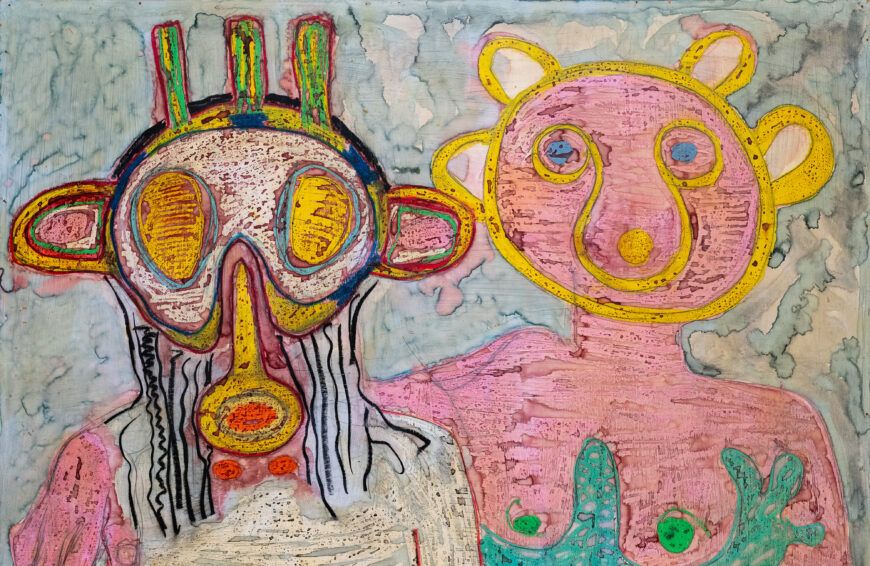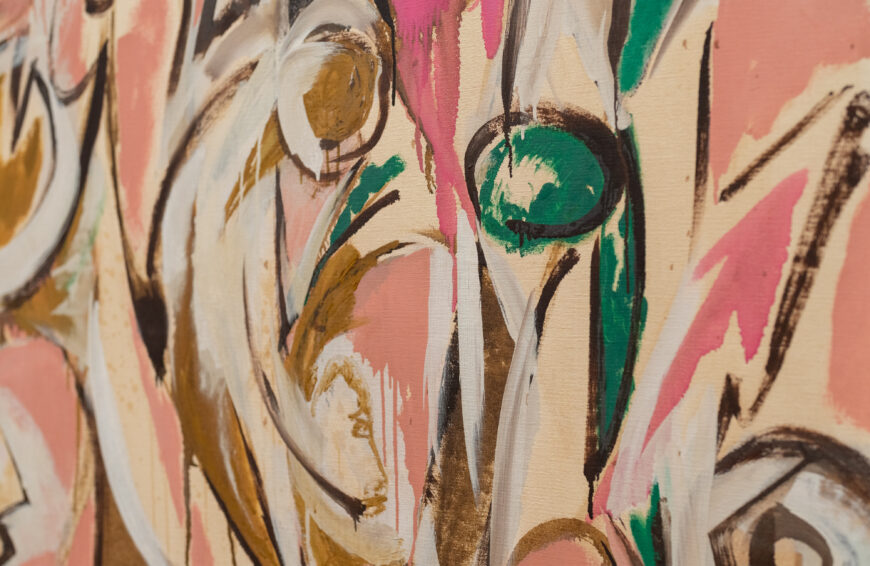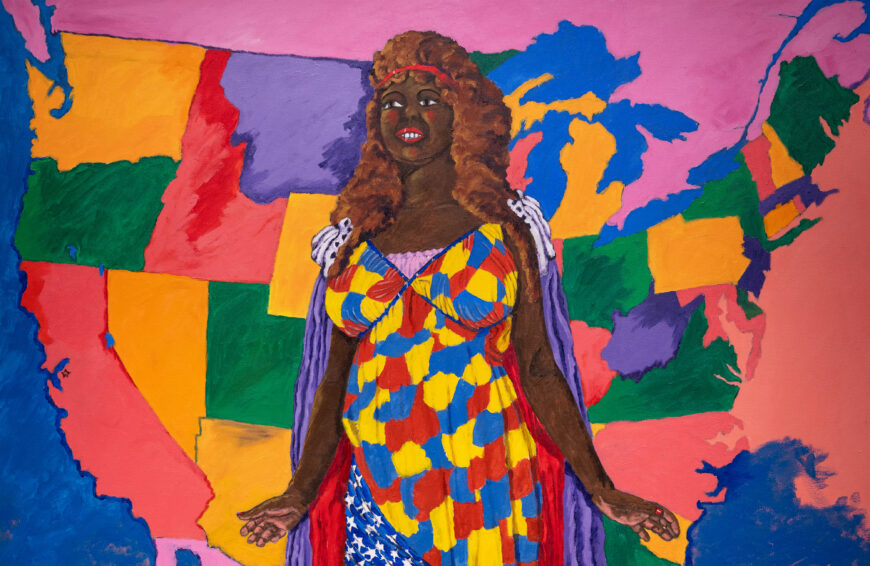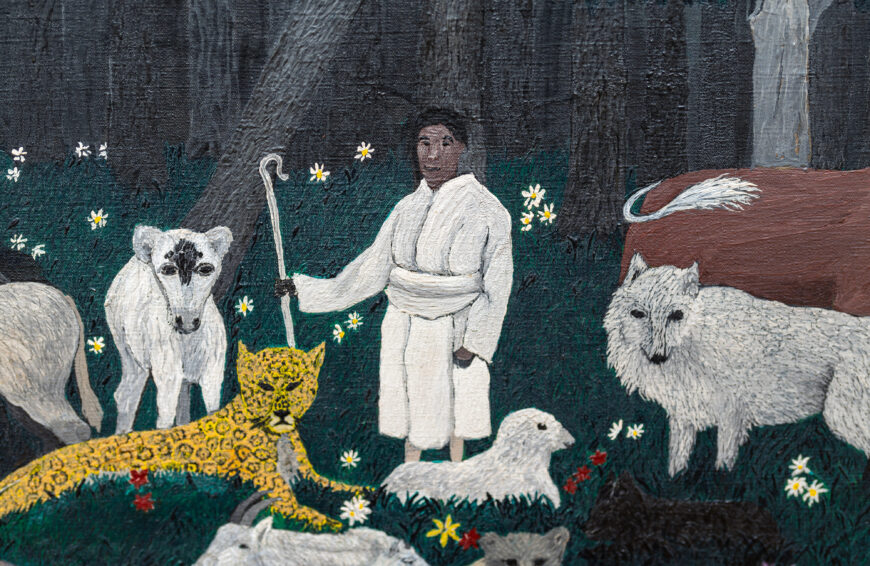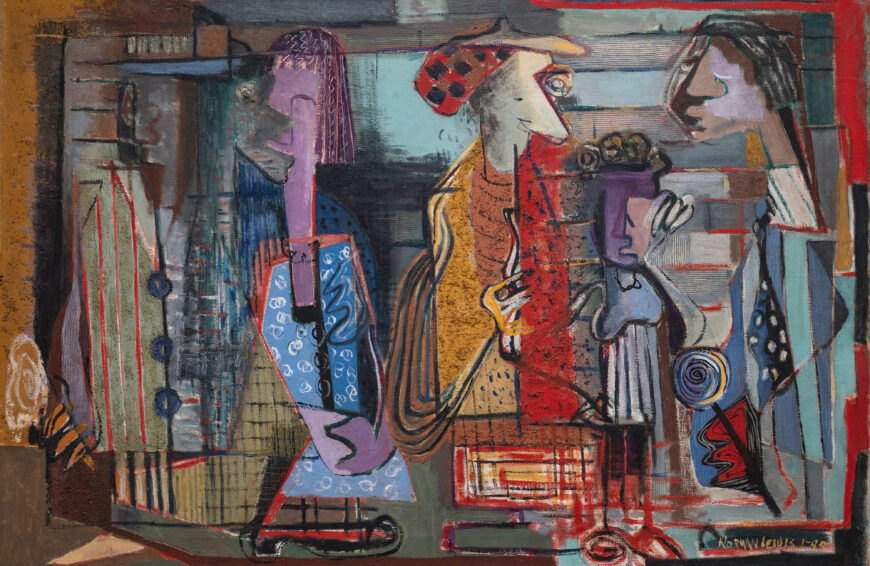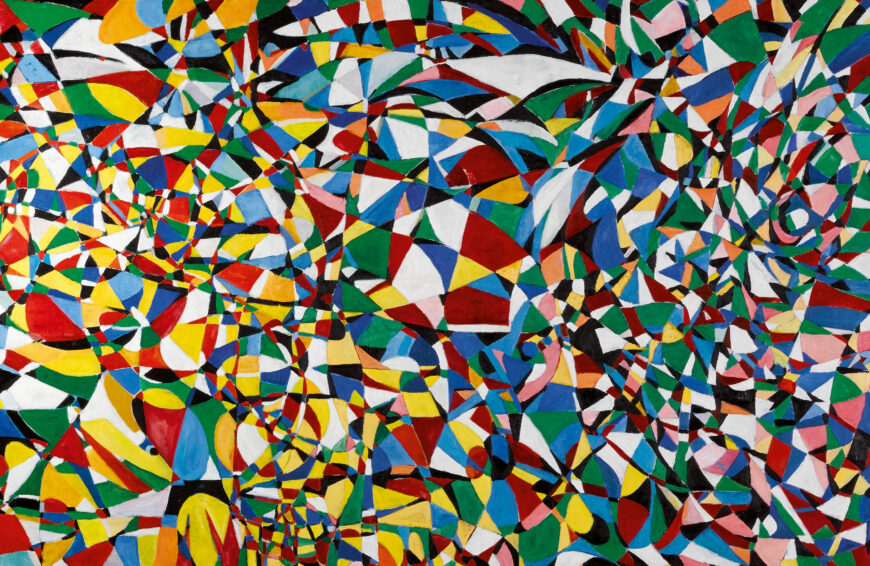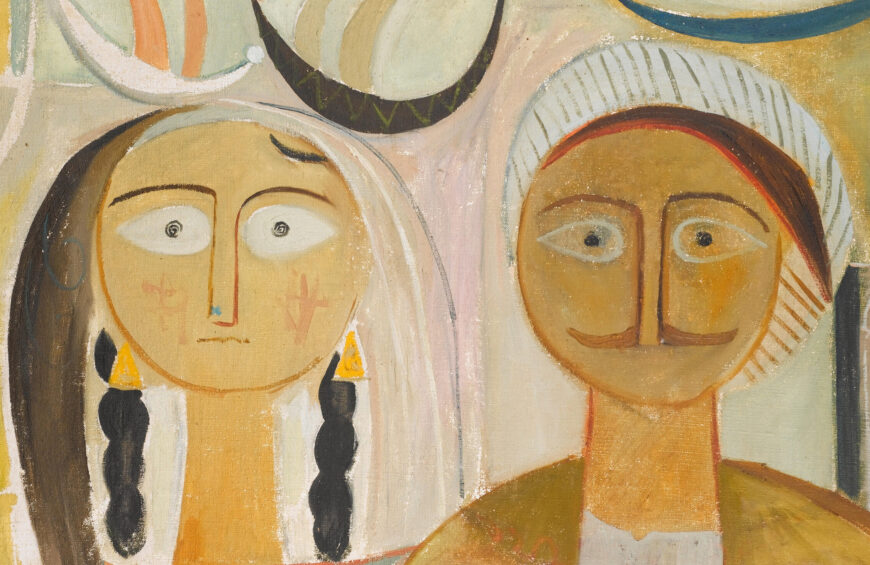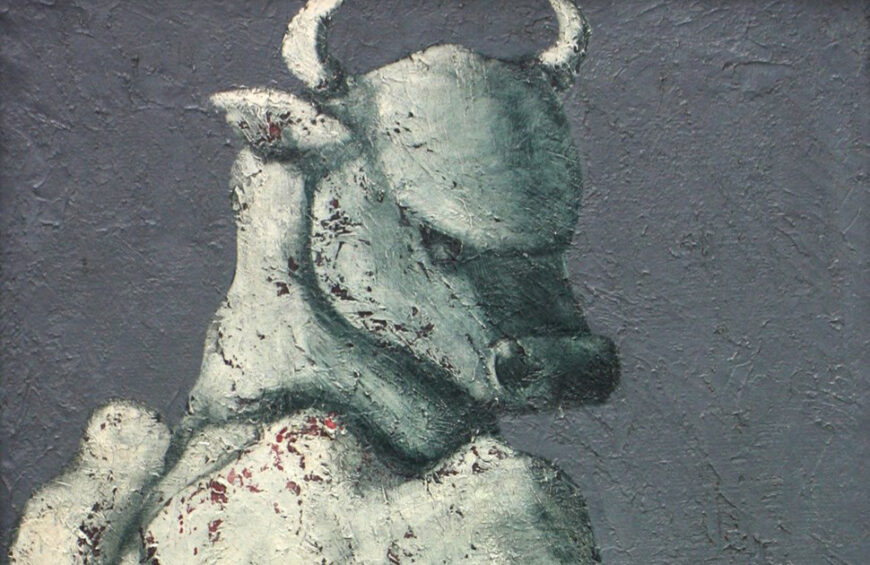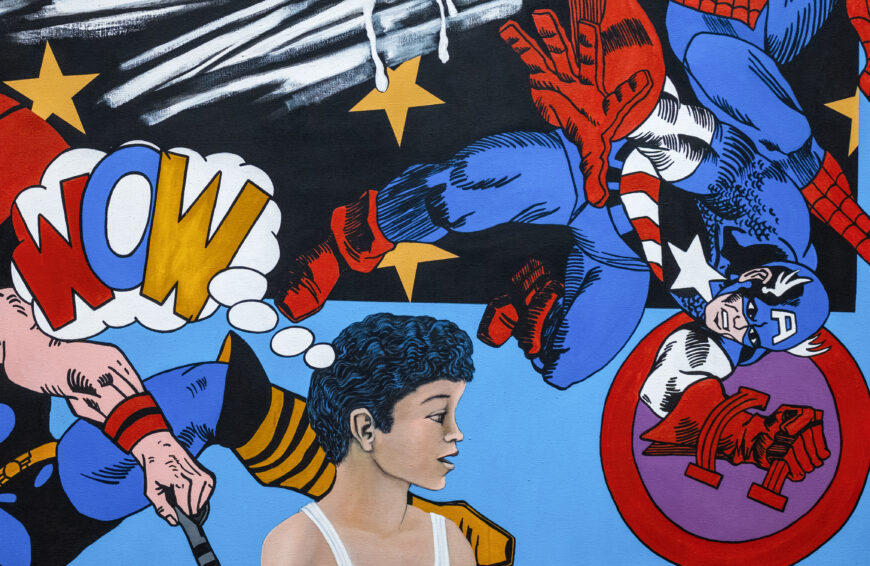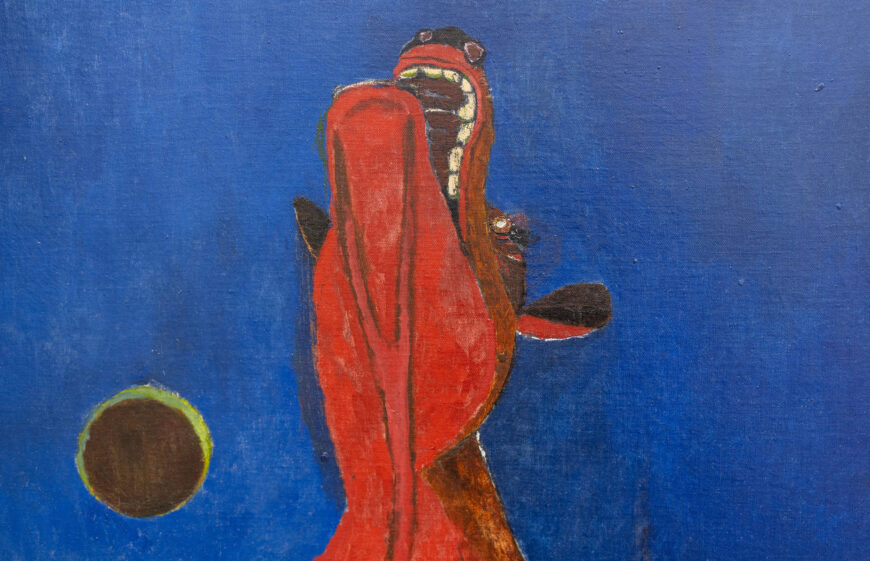Egon Schiele, Seated Male Nude (Self-Portrait), 1910, oil and gouache on canvas, 152.5 × 150 cm (Leopold Museum, Vienna)
[0:00] [music]
Dr. Steven Zucker: [0:00] Auguste Rodin had been perhaps the first person to willfully distort, destroy, the human body, which for thousands of years had been something to represent fully and completely and reverentially. But to do that in sculpture meant to refer to the ancient Greek sculptures and their fragments. Egon Schiele, in 1910, does it in paint.
Dr. Beth Harris: [0:28] It’s a remarkably radical image. We’re looking at the “Seated Male Nude,” a self-portrait by Egon Schiele from 1910 in the Leopold Museum. Schiele’s only 20 when he paints this.
[0:41] It’s a really large square canvas, and he presents this figure, himself, his body, with his feet cut off and his hands tightly wound, stretched across diagonally on this empty white background.
Dr. Zucker: [0:57] The hands are so wound, as you said, that you can’t actually see them. He is simply his head, his torso, his limbs, without the parts of the body that we grasp the world with. He is literally floating unmoored.
Dr. Harris: [1:12] The expressiveness of the body reminds me of Michelangelo, the way that Michelangelo used the body to express emotion.
Dr. Zucker: [1:21] But instead of the musculature, the heroism, the way that Michelangelo would imbue a body with divinity through its power, here we have a body that is virtually emaciated, that has been attenuated so that it almost will stretch and break.
[1:34] There is a delicacy and a sensitivity here. Look, for instance, at the hair on the legs. They can, almost like the tendrils of an undersea creature, feel the slightest wind, feel the slightest pulse. There is an intensified perception that exists here.
[1:51] It’s in part because the eyes are red, the nipples are red, the genitals are red, the navel is red. All of that also speaks to a kind of interior intensity. This is sexualized. It’s violent. And he also seems to be nothing but a physical shell that somehow is at odds with the intensity and the power of the emotional being within.
Dr. Harris: [2:13] It’s amazing to me the way that Schiele took himself so seriously as a subject for art. If you think about art history, its subjects are religion, the aristocracy, princes, kings.
[2:27] And here, at this moment, at the end of the 19th century and the beginning of the 20th century, this portrayal of subjectivity, of this focus on the self, of expressing the self and using radical formal means.
Dr. Zucker: [2:40] The problem then that Schiele seems to have set for himself is, how can I convey visually the external body as a means to understand the interior self?
[2:49] [music]


